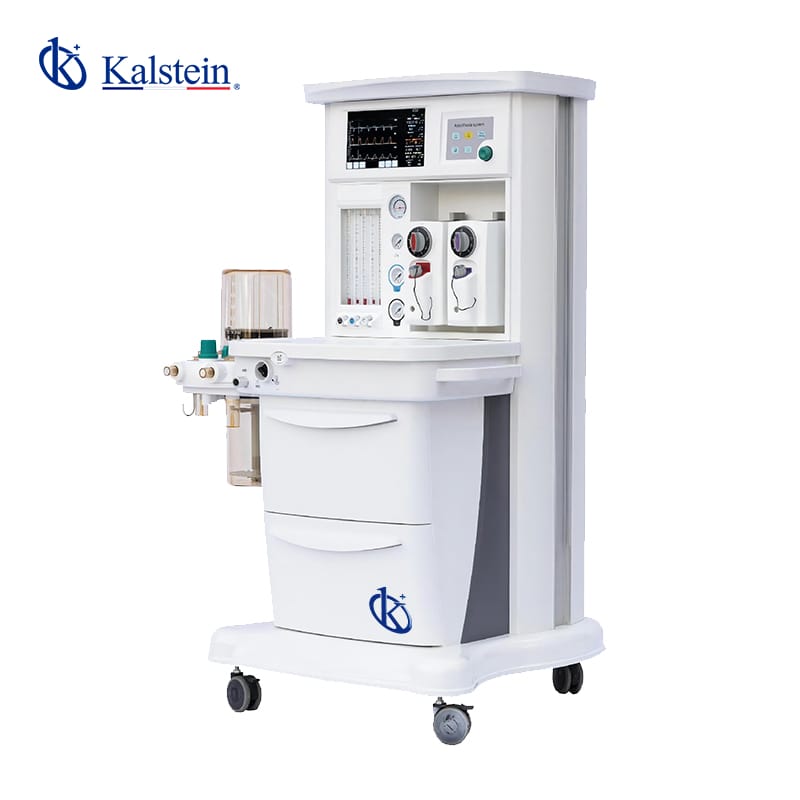Anesthesia machine is a hospital equipment which is mainly used for general, regional, intravenous and resuscitation sedation, its mechanism is based on a mechanical ventilator, breathing system, suction devices and patient monitoring instruments, through medicinal gases mixed with a concise concentration of anesthetic vapor, continuously at an appropriate pressure and flow rate.
Usually, the anesthesia machine, consists of five main mechanisms, composed of elements and systems with their respective safety requirements, they are: gas supply, flow meters, vaporizers, patient circuit that includes the mechanical ventilator and monitoring associated with the patient.
Functional characteristics of the anesthesia machine
The anaesthesia machines, have functional characteristics that are composed as follows:
- Fluxometers: It is responsible for measuring the quantities of a gas in circulation, and they are identified by yellow, green and blue tones.
- Vaporizers: are responsible for keeping the volatile liquid vapors adjustable within the required anesthetic concentration. The connection of the device is important to avoid leakage.
- Regulator: Reduces the pressure of a gas, facilitating compression at an extended rate to control the output of the cylinder at proper and constant pressure and normalizing the flow of the gas.
- Manometer: Calculates the ejection speed or flow rate of the gas from the normalizer in liters per minute. It consists of a device designed to calculate the tension of the aeriform fluids.
- Jus: device in the form of circular or rectangular metal clamps, with a zipper that can be adjusted and used to attach gas cylinders to the regulator or anesthesia machine. Inside, it has a piece that is ideally attached to the corresponding part of the cylinder valve.
It should be noted that the entire gas distribution system: cylinder, keys, hoses, etc., must be coded, the color code is usually used and the connections between the gas source and the anesthesia machine are unique to each gas, thus avoiding an erroneous connection and avoiding irreparable situations.
Visual indicators of the anesthesia machine
The anesthetic system, captures the parameters of the controlled interval and the data are displayed by an external system for record keeping, which are displayed by airway pressure, respiratory rate, minute volume, inspired and final CO2 concentration and inspired oxygen concentration. In addition, administered medications, laboratory data and intraoperative events can only be added manually.
In addition, the recording of the respiratory system with mechanical ventilation in the use of anesthesia, It will allow the doctor to know the conditions, to follow and monitor the patient, through numbers and / or graphs reflected in the monitor, which will bring safety, prevention and identification of certain complications. These parameters will be displayed on the screen of the anesthesia monitor, through waves or curves representing the values of the patient.
Moreover, the anesthesia machine is equipped with audible and visual alarms, which establish a significant safety measure for the patient, these must be sensitive enough to quickly manifest a critical event, depending on the risk of the situation and the urgency with which it must be dealt with.
Kalstein anesthesia machines
We at Kalstein are able to offer you the best anesthesia machine technology that any hospital unit would want. The anesthesia machine offers electronic PEEP function, we have YR series models, the expansion of the modern anesthesia workstation possible to greatly improve workflow and reduce operating costs. It has automatic tidal volume compensation, provides high precision output of only 20 ml. It can be easily maintained and cleaned without specialized tools and has CE certification, providing peace of mind to users.
We are manufacturers and we have improving advice to make your purchase ideal, with excellent prices. For a better experience, visit our catalog HERE

